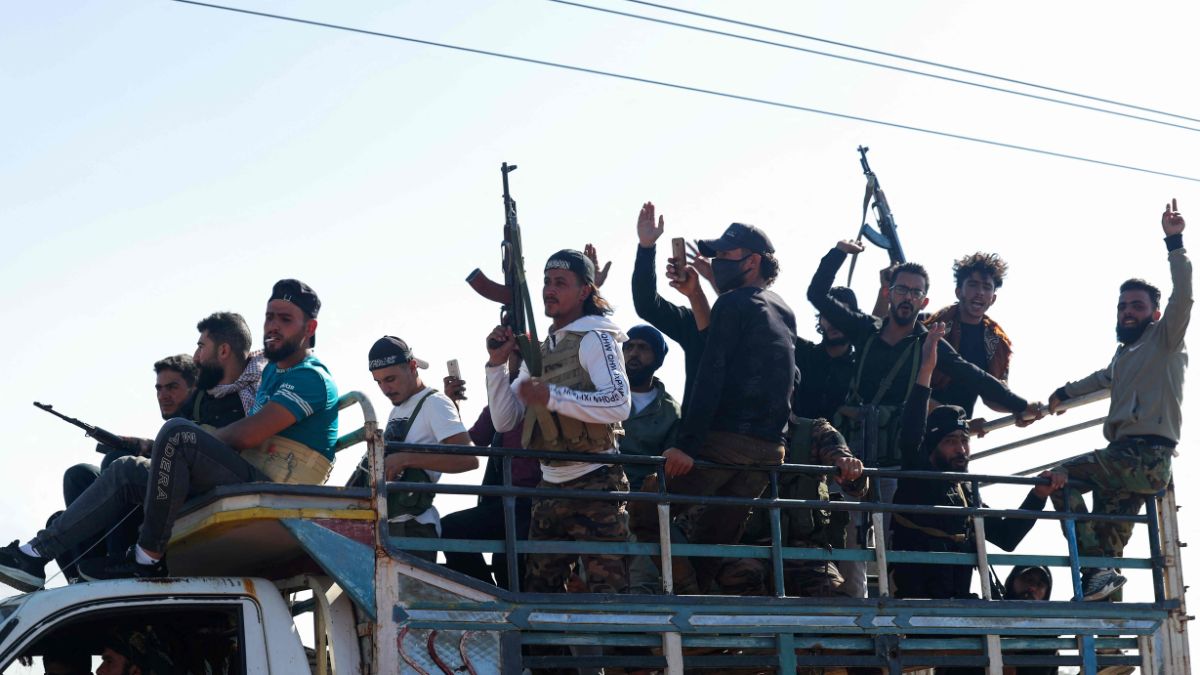EXPLAINED: Who are the Bedouins and why are they fighting the Druze in Syria?

According to researchers, the Bedouin and the Druze do not have any historical reasons for their conflict. The Druze are a rare majority in Syria’s southern Suwayda. The Bedouin tribes are a minority in the same district.
U.S. envoy to Syria Tom Barrack said early Saturday that Israel and Syria had agreed to a ceasefire following Israel’s intervention this week in fighting between Syrian government forces and rival armed groups
In a statement put out on X, he said that the ceasefire was supported by Turkey, Jordan and other neighbouring countries. “We call upon Druze, Bedouins, and Sunnis to put down their weapons and together with other minorities build a new and united Syrian identity in peace and prosperity with its neighbours," he said.
Thousands of people have been displaced following the clash between the Druz and the Bedouin clans in Syria. The Syrian president, Ahmed al-Sharaa, has said that he would send troops back to quell the fighting in the humanitarian crisis.
The most recent escalation came to be when a Bedouin man set up a checkpoint in Suwayda and attacked a Druze man selling vegetables, which triggered the back-and-forth attacks.
Suwayda residents had then detained several Bedouin tribe members. After that local groups retaliated by detaining Druze civilians.Gun fights broke out and more abductions and property damages followed.
Israel, meanwhile, launched airstrikes in defence of the Druze people and even struck the Syrian Defense Ministry on Wednesday. The Druze are also a minority community in Israel and often serve in the Israeli military. Damascus condemned the attack as a violation of the Syrian sovereignty and an attempt by the country to sow division.
The fighting between the Druze militias and the Bedouin tribal groups in Suwayda erupted after the Syrian army withdrew from the area under Israeli pressure. After the Syrian government forces intervened to restore order, they ended up taking the Bedouins' side, according to reports.
Allegations have arisen against the Syrian government claiming that they executed Druze civilians and looted and burned their homes. Syrian Observatory for Human Rights (SOHR) reported that some regime forces were actively fighting alongside the Bedouins.
On Wednesday, the government forces made a truce with the Druze community on condition that they maintain internal security.
But on Thursday, fighting flared up again in Suwayda. State media reported that Druze militias carried out revenge against the Bedouins, leading to a wave of displacement.
The UN migration agency said that about 80,000 people were displaced and supply routes have been disrupted, leading to shortages in aid.
Who are the Bedouin tribes?
Bedouin tribes in Syria follow Sunni Islam and the two groups have clashed for a long time. The community in Syria used to be tribally organised and mostly herded livestock in the Badiya (desert) regions. ‘Bedouin’ (literally meaning someone who lives in the desert) used to refer to people with a pastoral and nomadic identity but now includes people who also have history of being from that community according to recent research.
Currently, Bedouin tribal people are not fully dependent on livestock herding. They follow kin based lineages and and are usually headed by a leader or Shaykh. While the Bedouin tribes originated in Syria, they have spread far and live throughout the Levant.
During the Assad regime, some Bedouin tribes were with the government and some were against it. The tribes have been receiving support from other similar groups across Syria in their conflict with the Druze.
Who are the Druze?
The Druze are a religious sect that began in the 10th century as a branch of Ismailism. However, they do not identify as Muslim as they believe in reincarnation and do not accept converts. There are about 1 million Druze in Syria, and others live in Lebanon, Israel and in the Golan Heights, an area annexed by Israel.
The rest of the population in Syria is Sunni Muslims, making up about 70 per cent of the population. Alawites (an offshoot of Shia Islam) make up 10 per cent, and Shiites make up 3 per cent. The Druze have been pressuring the Syrian government to protect the rights of the minority.
In the Suwayda district, where the conflict has risen, the Druze are a majority, making up around 80 per cent of the population, followed by Christians. Sunni Muslims are a minority in the district.
Researchers have said that there is no historical reason for the two groups to have tensions. According to Ahmed Aba Zeid, a researcher who spoke to AP, “All of Syria is full of social problems that have no reason.”
The complex conflict has proven to be a challenge for Syria’s interim President Ahmed al-Sharaa while he attempts to stabilise Syria after the fall of the Assad regime which was in power for 13 years.
Middle East